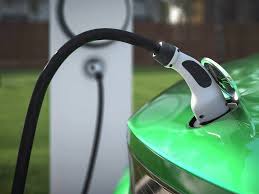World News20.06.2022
German EV industry opens up ‘second use’ battery market for energy storage

QAZAQ GREEN. German battery energy storage system (BESS) project developer Tricera Energy has been able to build its business thanks to ‘second use’ battery modules from the country’s automotive sector, its COO told Energy-Storage.news.
The Dresden-headquartered company has a 120MWh pipeline of projects for delivery by the end of 2023 but had to come up with an alternative to sourcing batteries the traditional way, as COO Lars Fallant explained:
“We don’t order batteries from China because we are too small for them to be interested in working with us, or the price is too high, which is why we use second use batteries from the automotive sector.”
The company repackages battery modules into BESS units starting from 100kWh in size, which it sources from the country’s EV industry, one of the largest in the world. ‘Second use’ means unused batteries, as distinct to ‘second life,’ which means repurposing of used vehicle batteries.
Fallant explained how it is able to procure unused battery modules in the scale required to do its BESS projects:
“Sometimes a production line will cease and there will be leftover battery modules we can use. Or, the automotive player makes more batteries than they need because of warranty agreements which were not exercised, and they don’t want to use ‘old’ batteries in their new lines. Right now there is also a chip shortage which has meant a relative overproduction of batteries in some cases,” he said.
“In all these cases, they sell to us for a good price and these are our core supply of batteries. We also have a small supply of batteries from our shareholder, which is a forklift company that builds its own battery modules. A third supply source which is small for now, but which we want to grow, is second life or recycled batteries from the automotive sector. Again, we’ve started here with our shareholder.”
The main challenges with second use battery modules – module disassembly into the constituent cells would be too costly – are two-fold according to Fallant. First, you need to design your own battery management system (BMS). Tricera’s shareholder had an existing basic one that Tricera was able to build on.
The other challenge is the variability in the size and charge type of the modules being used, meaning the mechanical structure of the rack needs to be built flexibly enough to accommodate this.
China restricts offshore solar PV projects to specific sea areas
Biden announces $7 billion for solar energy in low-income communities
Production of a solar energy storage battery has started in Vilnius
Ainur Sosanova: Clear rules are needed for functioning of bilateral contracts market
Process to submit applications for RES auctions to construct HPPs and WPPs has commenced in Kazakhstan
JinkoSolar recognized as a Tier 1 Energy Storage Provider by BNEF
Japanese satellites will transmit solar power to Earth
Australia has planned a 1 GW hydroelectric power plant at former coal pit
Apple ramps up investment in clean energy and water around the world
Two countries in Europe are powered by 100% renewable energy as wind capacity soars
IRENA’s report: Transition to renewables calls for new approach to energy security
New wind power plant to be built in Baku
Cost of bringing wind power plants into operation drops by more than one-third
Energy ministers and leaders to discuss the future of renewable energy in Abu Dhabi
Hungary boasts the EU's largest geothermal system
EC adoped of the strengthened Energy Performance of Buildings Directive
90-GWh thermal energy storage facility could heat a city for a year
Europe embraces speedier, riskier way of building power grids
Former SpaceX, General Motors engineers turn to space-based solar power
The US just beat its goal to permit 25 GW of clean energy by 2025












